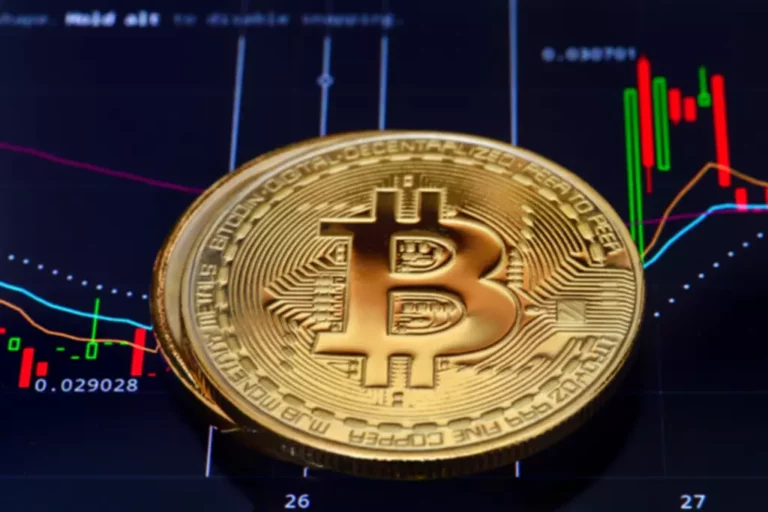Content
The pushback on payment for order flow is proof that we dont have to take stock market norms at face value. As a community, investors on the Public app are able to tip on their own accord, or save the funds pfof brokers while they execute trades directly with the exchange. The same cannot be said for all no-fee brokers, but that could change.
Lower commissions and fees, price improvement
A Bond Account is a self-directed brokerage account with Public Investing. Deposits into this account are used to purchase 10 investment-grade and high-yield bonds. The Bond Account’s yield is the average, annualized yield to worst (YTW) across all ten bonds in the Bond Account, before fees. The “locked in” List of cryptocurrencies YTW is not guaranteed; you may receive less than the YTW of the bonds in the Bond Account if you sell any of the bonds before maturity or if the issuer defaults on the bond.
How does payment for order flow work?
- This means that your trades are routed directly to exchanges or other venues where PFOF is not involved.
- Additional information about your broker can be found by clicking here.
- Margin Accounts.Margin investing increases your level of risk and has the potential to magnify your losses, including loss of more than your initial investment.
- Of course, not all differences in options and stock trades would be so stark.
- The EU’s Markets in Financial Instruments Directive II (MiFID II) and the UK’s Financial Conduct Authority (FCA) have both banned the practice, citing concerns over conflicts of interest and execution quality.
Online brokers with zero-commission trading tend to attract a wide array of investors. It takes a level of responsibility off https://www.xcritical.com/ of the retail customer, allowing them to learn as they go and make decisions based on the stock markets performance, not broker fees. Many brokerages discovered a feature called the payment for order flow. And while you might not be paying your broker-dealer to execute your deal, it turns out the brokerage firm is getting paid.
Markets Without Payment for Order Flow
In contrast, the European Union and the United Kingdom have imposed stricter regulations on PFOF. The EU’s Markets in Financial Instruments Directive II (MiFID II) and the UK’s Financial Conduct Authority (FCA) have both banned the practice, citing concerns over conflicts of interest and execution quality. Other major brokerages earning off of PFOF include Charles Schwab, TD Ameritrade, and E-Trade. Together with Robinhood, these four institutions earned a collective $2.5 billion on PFOF in 2020. The newbies are aggressive and offer you the best fill, better than the old players.

“I asked staff to take a holistic, crossmarket view of how we could update our rules and drive greater efficiencies in our equity markets, particularly for retail investors,” he stated. The U.S. stock market already prioritizes institutional investors, especially with the advent of automation. The constant inflow and outflow of shares is well beyond what humans alone could produce, and these machines often compete against one another. In a way, that’s what made the GameStop (GME) short squeeze of Jan. 2021 so incredible, whether you were in on the rally or not.
Broker-dealers must disclose the nature of any compensation received in return for routing orders, as well as the overall process they use for order routing decisions. By mandating this disclosure, the reports mandated by 606(a) aim to enhance the integrity of the market and protect investor interests. Changes in the complexity of trades involving equity, options, and cryptocurrency have come about as exchanges and electronic communication networks have proliferated. Market makers are entities, typically large financial firms, that provide liquidity to the financial markets by buying and selling securities.
Although T-bills are considered safer than many other financial instruments, you could lose all or a part of your investment. When you enter a trade, your broker passes the order to one of many market makers for execution. The market makers compete for this order flow because they can earn a profit through the spread between the securities bid and offer price.

While investors don’t directly participate in the arrangement, how well their trade is executed can be affected by it. PFOF is how brokers get paid by market makers for routing client orders to them. In the 2010s, brokers were forced into a race for the lowest fees possible, given the competition. PFOF allowed the brokerages to make up for lost customer commissions. It can come as a fee per trade, a share of the spread, or other financial incentives. The bid ask spread is a bracket, representing the highest price buyers are willing to pay for a stock, the bid, and the lowest price sellers are willing to sell that stock, the ask.
Market data is provided solely for informational and/or educational purposes only. It is not intended as a recommendation and does not represent a solicitation or an offer to buy or sell any particular security. Banking services and bank accounts are offered by Jiko Bank, a division of Mid-Central National Bank.JSI and Jiko Bank are not affiliated with Public Holdings, Inc. (“Public”) or any of its subsidiaries. None of these entities provide legal, tax, or accounting advice. You should consult your legal, tax, or financial advisors before making any financial decisions.

Traders should also be aware of their rights and responsibilities, including the right to ask their broker about their PFOF practices and the responsibility to monitor their trade execution quality. Brokers are the intermediaries between clients and market makers. They are responsible for routing client orders to market makers for execution. In return for this service, brokers receive a payment from the market maker. They are firms that stand ready to buy and sell securities at all times, providing liquidity to the market. Market makers profit from the spread between the bid and ask prices of securities.
The S&P Midcap 400/BARRA Value is a crucial index in the world of trading, providing a comprehensive and reliable benchmark for mid-cap companies in the United States. In short, we don’t receive (or take) any form of payment for order flow. Get stock recommendations, portfolio guidance, and more from The Motley Fool’s premium services. Buying one national currency while selling another is known as forex trading.
Market makers compete for orders from broker-dealers and institutional traders like mutual fund companies. Retail trades from individual investors are especially attractive to market makers because they are generally small and can be turned around quickly for a profit. It creates a conflict of interest for brokers and might result in worse execution prices for investors.
Funds in your High-Yield Cash Account are automatically deposited into partner banks (“Partner Banks”), where that cash earns interest and is eligible for FDIC insurance. Your Annual Percentage Yield is variable and may change at the discretion of the Partner Banks or Public Investing. Apex Clearing and Public Investing receive administrative fees for operating this program, which reduce the amount of interest paid on swept cash. Direct routing to the exchanges is more expensive, which is why were turning what used to be a revenue stream (ahemPFOF) into a cost center. And forgoing PFOF allows us to promote our core values of a transparent investing environment, as the practice can go against the positive impact that many investors have in mind when they envision a better world. The market makers execute the trade, and gives the brokerage a tiny portion of the trade value as a way to thank the brokerage for sending business their way.